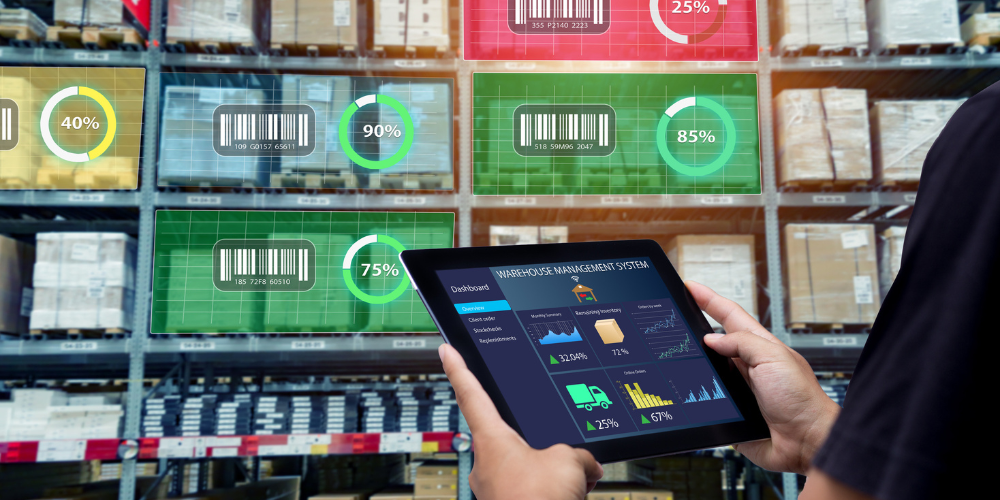Inventory management forecasting for ecommerce is no longer just about guessing future sales. When products move through multiple channels and ship across borders, even small mistakes can lead to big problems. Overstock eats up space and cash, while stockouts damage your reputation and lead to lost sales.
With AI-driven inventory systems expected to grow by 30% by 2026, smarter forecasting is more important than ever. This blog shows how to forecast smarter, connect it to supply chain planning, and fix warehouse inventory issues before they cost you.
Understanding Inventory Management Forecasting for Ecommerce
Inventory management forecasting for ecommerce is about knowing what customers will buy and when, so your ecommerce business can avoid stockouts or excess inventory. But it’s tough—orders come from many channels, and you need the right data, tools, and forecasting techniques for inventory to keep warehouse inventory levels aligned.
Accurate demand forecasting is essential. Poor predictions slow fulfillment and lead to costly mistakes. Ecommerce platforms like Shopify now integrate tools and algorithms to forecast future demand more precisely, improving forecast accuracy.
To succeed, you must account for flash sales, seasonality, and shipping lead times—all tied into your supply chain planning. Visigistics helps ecommerce brands improve inventory forecasting by connecting demand data with shipping and restock schedules.
Forecasting Techniques for Inventory That Logistics Teams Trust
Forecasting techniques for inventory help logistics teams make smart, data-driven choices. They're essential for ecommerce brands trying to keep up with customer demand across different platforms. Unlike guesswork, these methods use real trends and accurate demand inputs to align stock levels with fulfillment schedules and shipping timelines.
Here are five forecasting techniques for inventory that are especially useful for ecommerce logistics and are useful across various ecommerce platforms:
1. Historical Sales Analysis
Use past order data to spot buying patterns and plan for repeat trends. This method gives ecommerce businesses a solid foundation for forecasting based on actual buyer behavior, helping them avoid guesswork.
2. Moving Averages
Smooth out sales spikes or dips to find steady demand over time. This technique helps create a more consistent view of product demand, improving forecast accuracy.
3. Seasonal Adjustments
Look at how holidays or seasons change buying behavior to fine-tune stock levels. Ecommerce brands benefit by staying prepared for demand surges and avoiding overstock during slower periods.
4. Channel-Based Forecasting
Forecast separately for your website, marketplaces, and wholesale accounts. This allows logistics teams to match product availability to the demand patterns of each ecommerce platform more accurately.
5. Collaborative Forecasting
Share forecasts with suppliers and logistics partners to improve accuracy and avoid delays. Working together helps forecast future demand more effectively and builds a supply chain that can meet customer needs with fewer surprises.
These forecasting techniques for inventory give logistics teams a clearer view of what’s coming—so they can adjust shipments, warehouse space, and labor in advance to meet customer demand without costly last-minute fixes. They also allow ecommerce businesses to improve overall stock management and respond to demand changes with greater confidence.
How Supply Chain Planning Improves With Better Forecasting
When your demand forecasts are accurate, every part of your operation runs more smoothly. Supply chain planning becomes faster, more flexible, and more reliable—especially for ecommerce brands managing high volumes and shifting sales channels. It allows your team to anticipate future needs, allocate resources better, and avoid costly overreactions to sudden changes.
Better forecasting means better planning. Here’s how it helps:
Improved Supplier Coordination
Accurate forecasts help suppliers prepare and deliver on time. This strengthens communication and ensures fewer disruptions in delivery.
Smarter Procurement Decisions
Order only what’s needed, when it’s needed, reducing waste. Better purchase timing leads to lower costs and more accurate demand coverage.
Faster Inventory Turns
Keep products moving, not sitting, which frees up space and cash. This helps maintain a leaner warehouse and prevents overstock.
Fewer Shipping Delays
Logistics teams can schedule shipments and manage freight more smoothly. Consistent planning also makes it easier to handle last-minute changes.
Stronger Customer Experience
With the right stock available, orders ship faster and more reliably. Meeting demand on time builds trust and keeps customers coming back.
Visigistics helps businesses connect forecasting tools directly into their supply chain planning process, using forecasting techniques for inventory that keep operations aligned from top to bottom. This integration improves response times, increases forecast accuracy, and ensures teams can confidently plan supply levels and order fulfillment.
What to Do When Warehouse Inventory Levels Don’t Match Demand
Even with solid systems in place, warehouse inventory levels can easily fall out of sync with what customers are actually buying. Rapid demand changes, shipping delays, or forecasting errors can all throw your stock levels off balance. Here’s how to identify the gap—and how to fix it fast using inventory management forecasting for ecommerce to prevent it from happening again:
|
Problem |
Why It Happens |
What to Do |
|
Too much inventory |
Over-forecasting or slow sales |
Adjust future forecasts and run promotions |
|
Too little inventory |
Missed trends or supplier delays |
Use safety stock and review forecast inputs |
|
Wrong items in stock |
Bad data or poor order logic |
Clean up SKUs and update product rankings |
|
Inventory in the wrong location |
Poor warehouse or shipping planning |
Re-route or transfer stocks smartly |
|
Demand spikes out of nowhere |
Unplanned promotions or viral traffic |
Build flexibility into your logistics model |
When warehouse inventory levels don’t match demand, the key is speed and flexibility. Strong supply chain planning gives your team the structure to react quickly and avoid bigger setbacks. Visigistics helps ecommerce teams react quickly, adjusting shipping schedules, reallocating stock, and keeping fulfillment steady.
Ready to Improve Your Forecasting Strategy?
We know how frustrating it can be when your inventory doesn’t match demand, especially when you're working across multiple ecommerce channels and tight shipping timelines. Forecasting mistakes lead to missed sales or wasted stock, especially when warehouse inventory levels are off target, and that hurts your bottom line.
Visigistics helps you get ahead of the problem. With tools built for inventory management and forecasting for ecommerce, we align your demand data, shipping plans, and warehouse inventory levels so everything works together.
Talk to Visigistics today and build a smarter, more reliable forecasting strategy.





